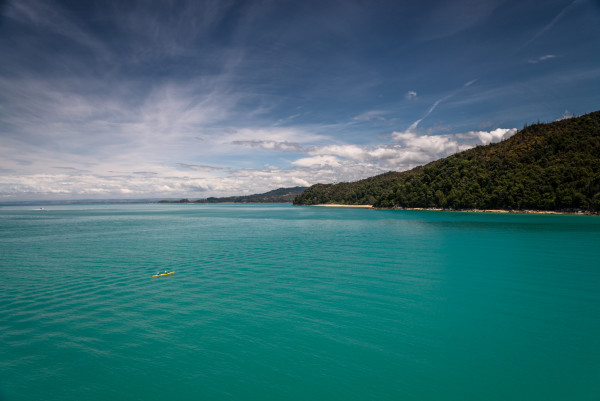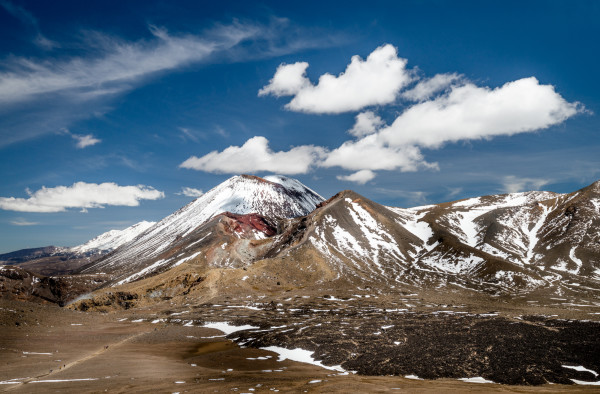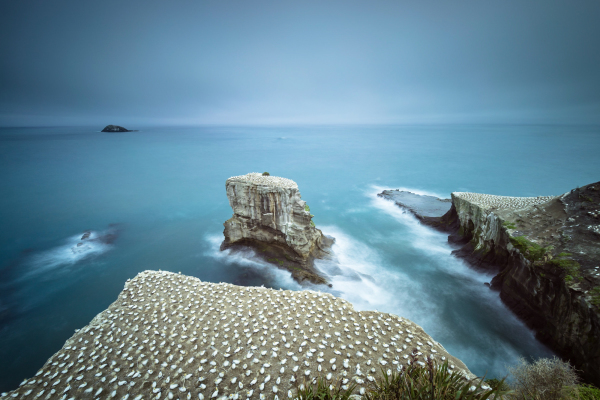06
2014There are several “Great Walks” in New Zealand that receive very positive reviews in guidebooks and online. The Abel Tasman Track is one of these walks that generally receives “not to be missed” praise. It is in fact the most popular Great Walk in New Zealand. Located in the Abel Tasman National Park on the South Island’s northwest coast, the walk extends roughly 56 km from the start at Marahau to the end of the track at Wainui. Anne and I did a shortened version of the trip over 4 days in December (6-9) from Marahau to Totaranui covering 41.4 km.
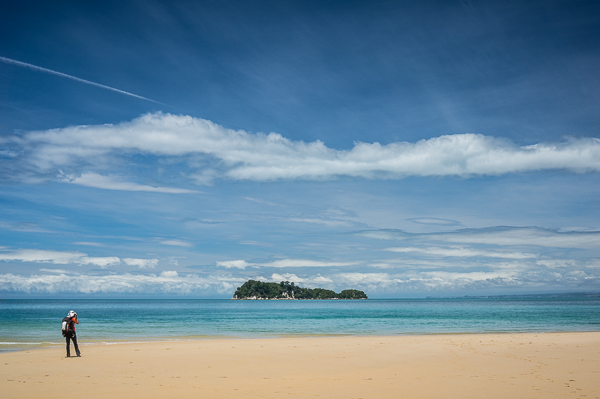
(photo by Anne Archambault)
The track mostly follows the coast line, sometimes on beach but mostly on very well maintained trails in the forest overlooking the Tasman Sea. The myriad streams and small canyons along the way are bridged — some with impressive suspension bridges. In two places, there are relatively significant tidal crossings that can only be done within an hour or two of low tide.
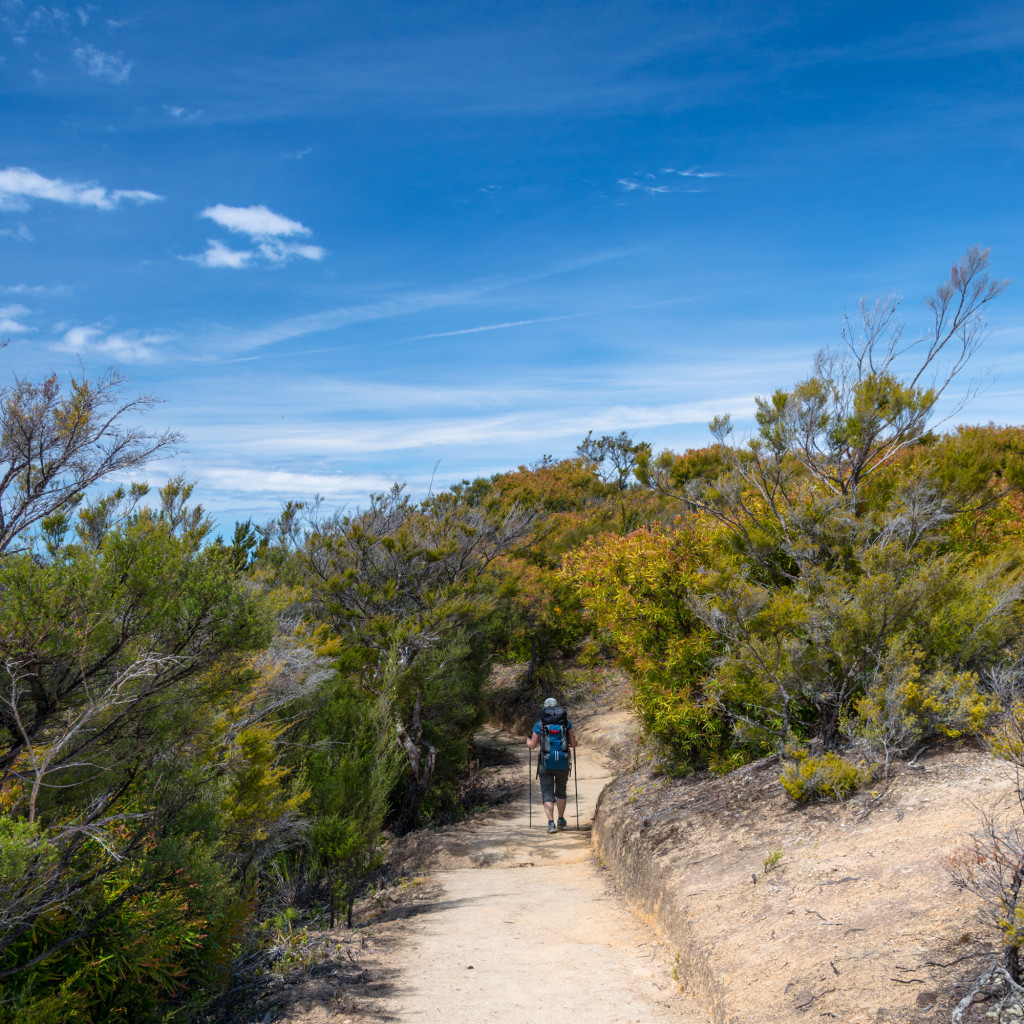
Overnight accommodation is provided in both Department of Conservation (DOC) huts as well as campgrounds. The huts must be booked well in advance and provide drinking water, toilets, and sleeping pads in bunk style dorm rooms. The length of the track (through Totaranui) is serviced by water taxi, which allows hikers to access any point along the trail easily. This is a blessing and a curse, it allows for myriad options to explore the trail, but also allows scores of day trippers to visit huts and campgrounds that would otherwise be 2 days from the trailhead.
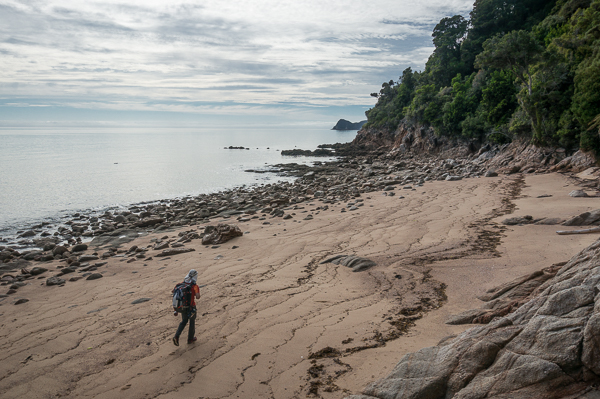
(photo by Anne Archambault)
Beaches and Beautiful Blue Water
The highlight of the track is the proximity to the beautiful beaches and pristine blue water of the Tasman Sea. Without knowing better, it would be easy to mistake the coastline for beaches in Thailand or Hawaii.

In some places, rocky granite outcroppings form small islands just offshore. These provided a wonderful opportunity for us to take a break from the walk and pull out the camera gear. We didn’t use the tripod often, but in these cases it was very handy for long exposure compositions.
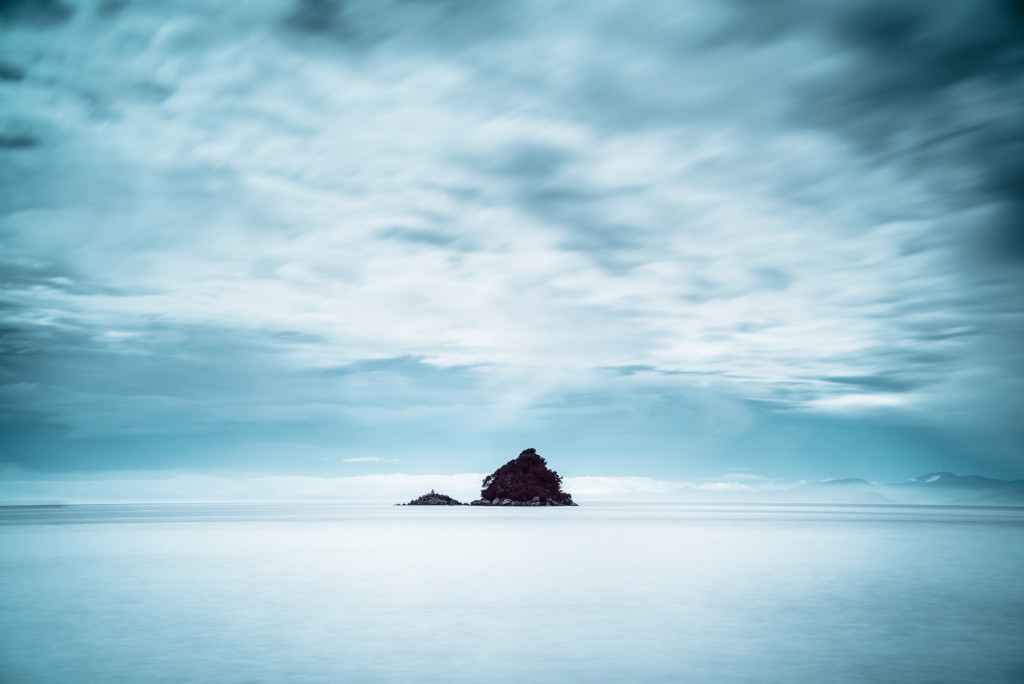
Because of the way the hike is laid out, Anne and I were generally able to complete our hike by early afternoon, giving us plenty of time to rest and relax at the hut. Alternatively, many hikers took the opportunity to stop along the way at secluded or otherwise wonderful beach locations and relax.
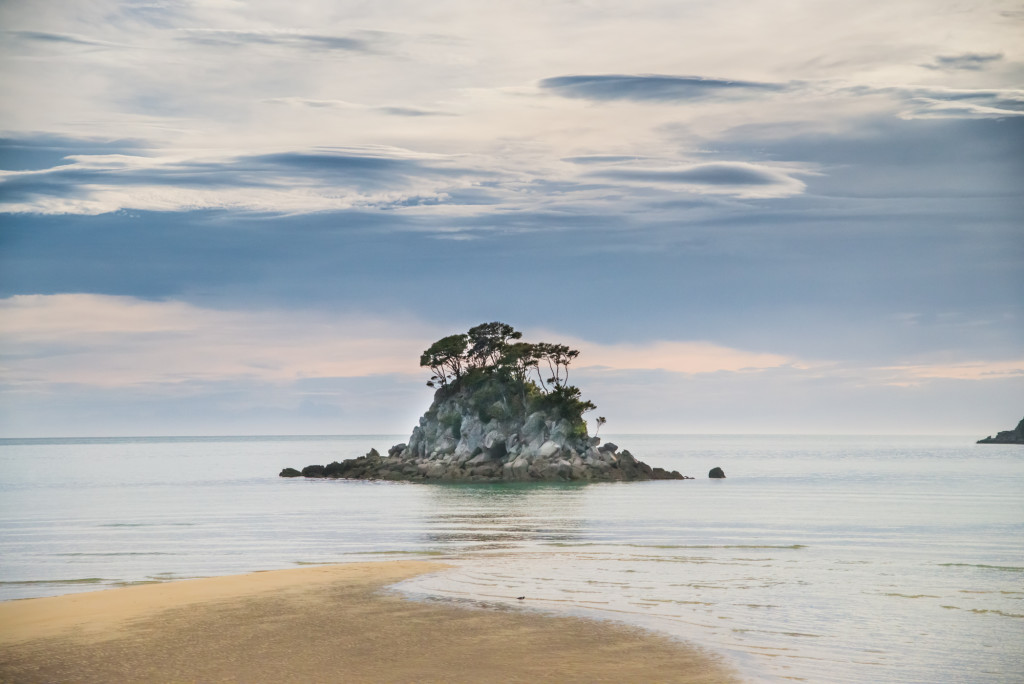
Of course the beaches also provided wonderful sunrise and sunset photography. At Anchorage Bay, we had to be up at 5am to make the tidal crossing and were able to watch an amazing sunrise bloom over the hills.
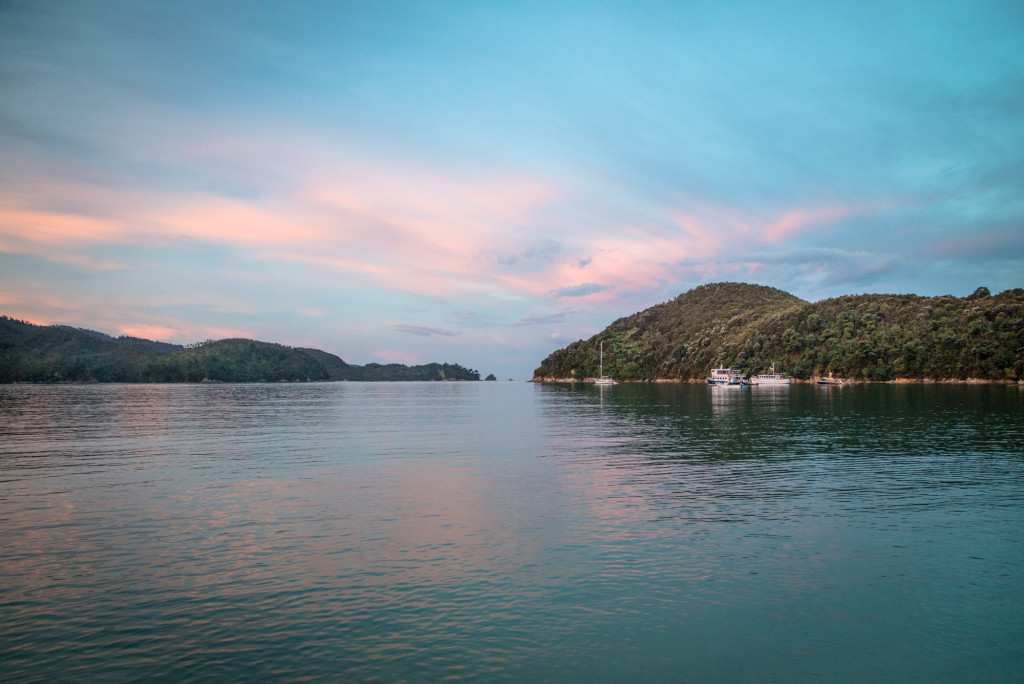
Wildlife
The national parks we visited on the South Island all had robust conservation efforts in place to help protect indigenous species. Invasive species such as possums, rats, and stoats have decimated the native bird populations. Along the track are literally hundreds of traps designed to kill these predators.
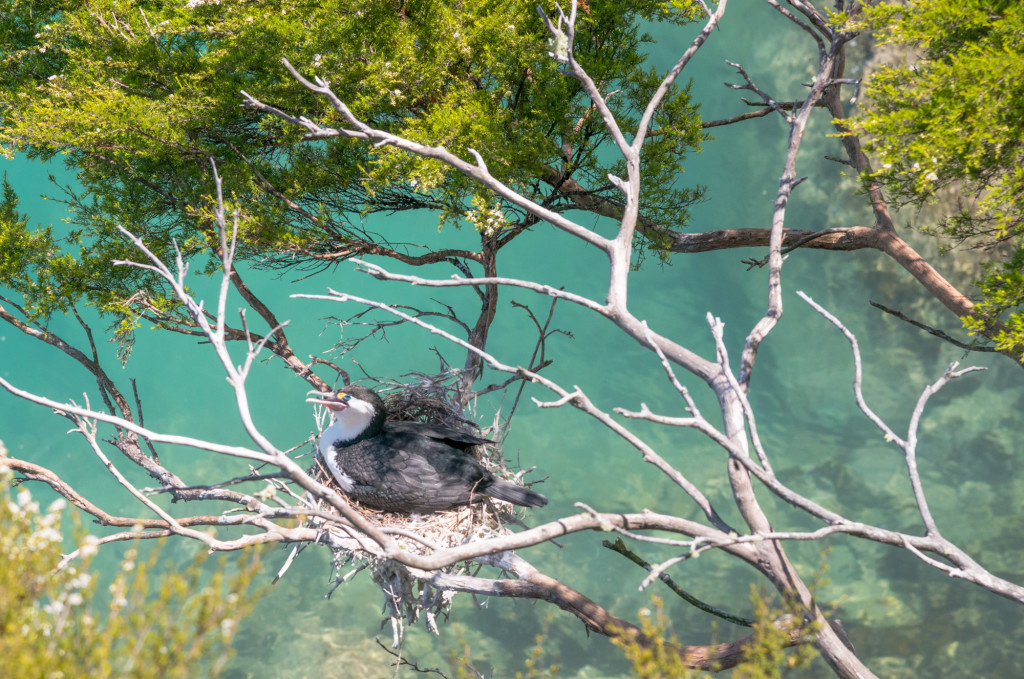
Many of the islands visible along the track are sanctuaries where native species can nest in relative safety. There is also the Tonga Island Marine Reserve to help protect dolphins, seals, and the many native species that inhabit the diverse system of waterways, estuaries, and bays. Fur seals come here to lay their pups and penguins sleep along the rocky headlands.
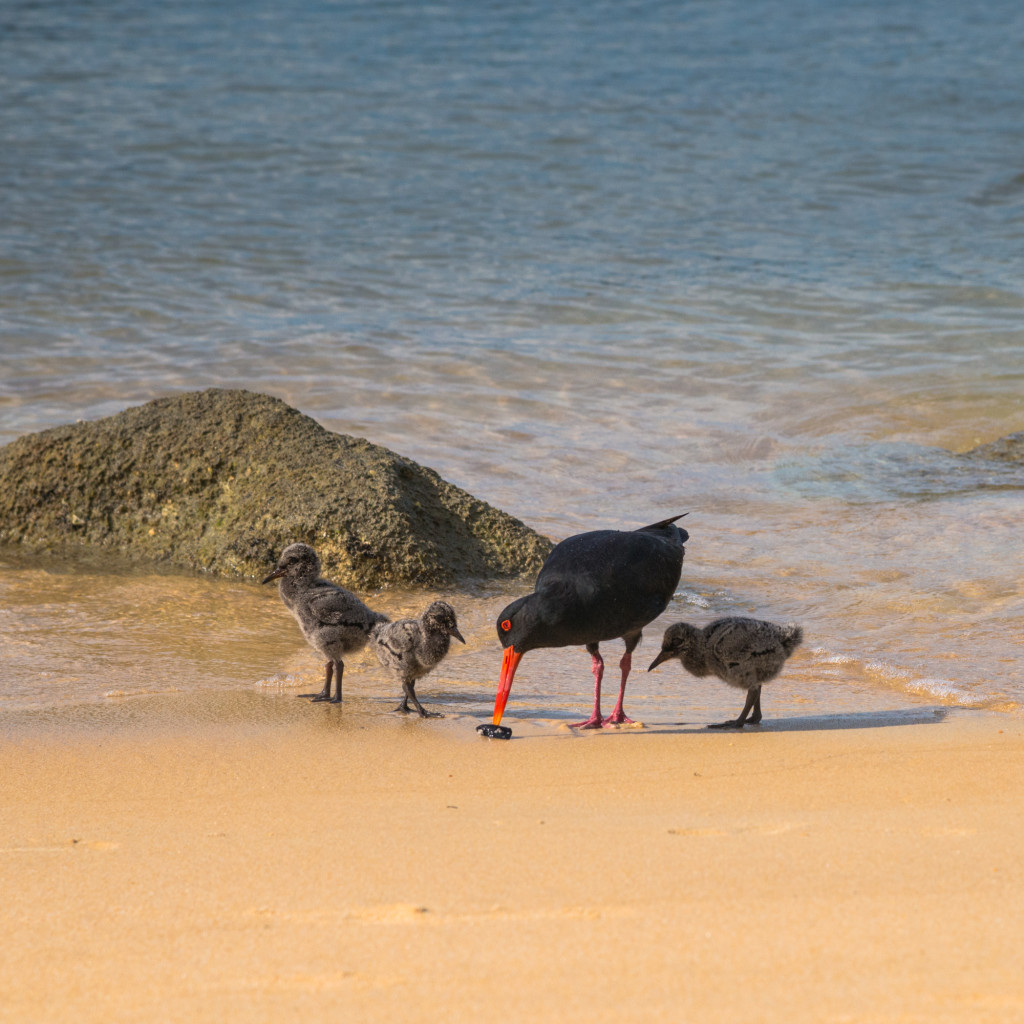
Because we were walking the track in the southern hemisphere’s summer, we were also able to see a lot of young chicks. At Anchorage Bay, a pair of variable oystercatchers had a set of three chicks that allowed us to approach during low tide.

We also saw many of the native quail, some with broods as large as 6 or 8. Some of these quail were quite tame and even posed a little.
Incredible Flora
It’s hard to discount the incredible flora of New Zealand. In Abel Tasman National Park, the forest is dominated in the undergrowth by ferns both small and large. Tree ferns and beech form the bulk of the forest canopy, punctuated by fragrant flowering manuka trees (famous for their honey).
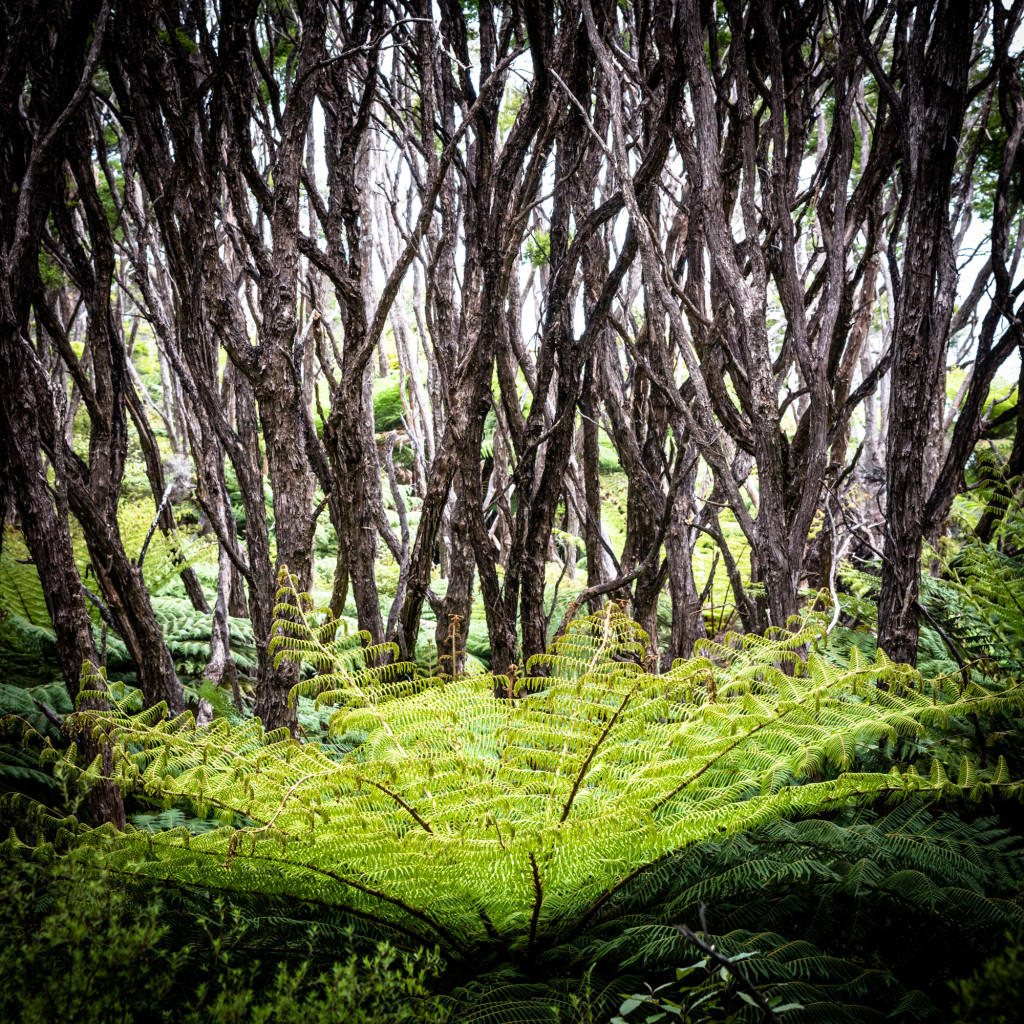
The ferns lend a prehistoric feel to the forest and you could be forgiven for thinking you might be walking on the set of Jurassic Park. In fact, we talked to one person who was sure they filmed some scenes from the movie in the park.
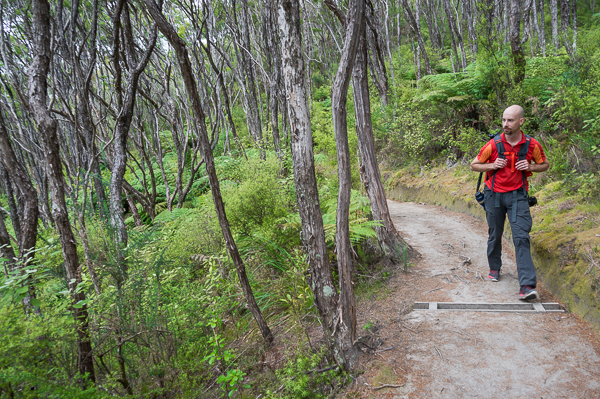
(photo by Anne Archambault)
Should you go?
In short, yes. The trail is fantastic, the days are short, and the scenery is well worth it.

The trail is a little more crowded than other tracks, both because of the relative ease and the easy access. It’s a great warm up for longer or harder walks and it’s also great for families (of which we saw many).
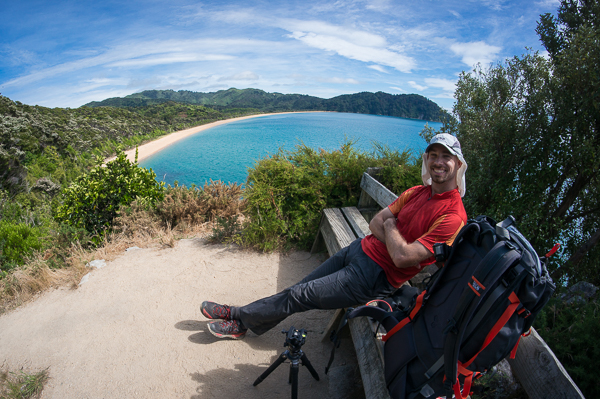
(photo by Anne Archambault)
And who could argue with lots of time on the beach? Anne and I both felt like 4 days was plenty; it provided enough time to get into the backpacking groove without feeling like we were spending more time than we should (the south island is big, we didn’t want to miss anything).
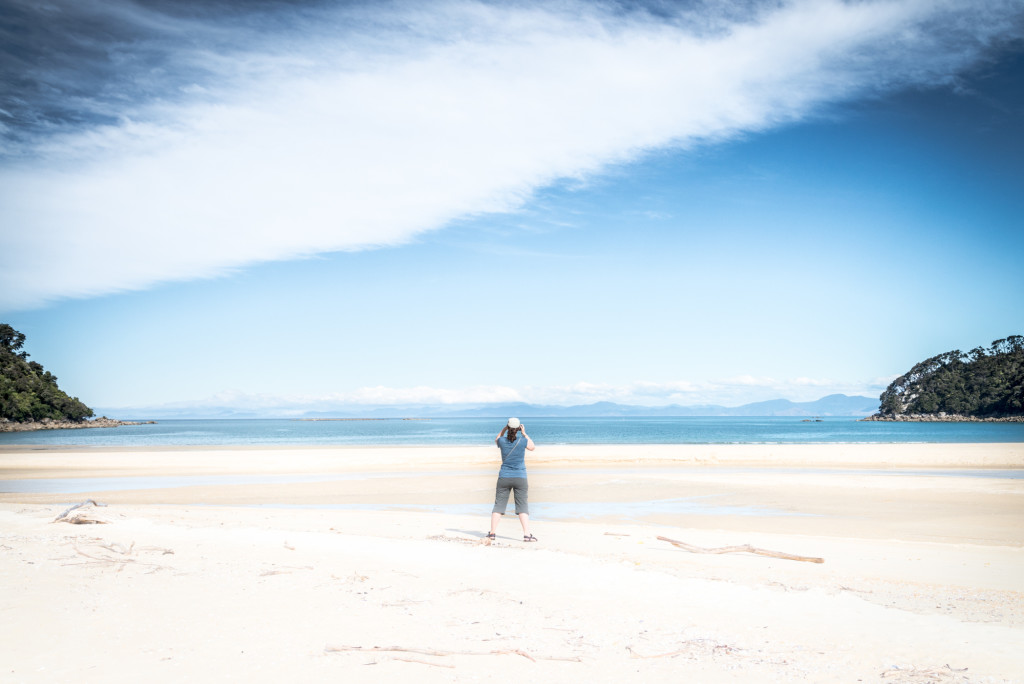
Max elevation: 385 ft
Min elevation: -283 ft
03
2014As part of our vacation in New Zealand, Anne and I had a set of “Great Walks” planned. One of those was the Tongariro Northern Circuit that circumnavigates the beautiful volcanic cone of Mt. Ngauruhoe (also known as Mt. Doom in the Lord of the Rings movies). The Northern Circuit is normally a four day walk serviced by DOC huts. However, the weather forecast for the days we had booked was terrible; gale force winds, rain, and a low cloud ceiling which would have precluded any views of the mountains. So we changed plans, looked for a weather opening, and did the one day crossing instead.
The Tongariro Alpine Crossing is billed as one of the greatest day hikes in the world, and I think Anne and I would be compelled to agree that it’s certainly high on the list. Between the well maintained trail and the incredible views it really is a winner. The only drawback was the sheer number of people also doing the crossing, which on the day we made the crossing must have been in the hundreds.
The hike from the trailhead up to Soda Springs crosses sub-alpine scrub, following the course of a small stream. The trail here is exceptional and well graded with many areas having full boardwalks. Views up to Mt. Ngauruhoe only improve with each step.
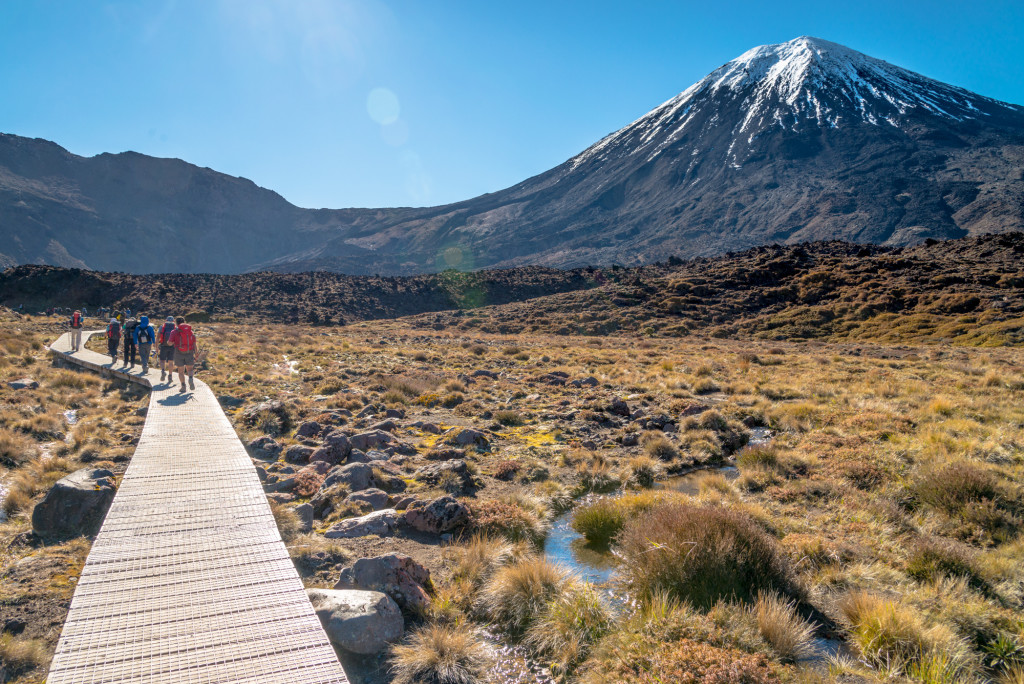
From Soda Springs, the trail climbs steeply up to the South Crater entrance. While steep, this path is still excellent with most of the trail formed into actual stairs. Gaining in elevation, we were able to see Mt Taranaki standing sentinel over New Plymouth some 50 or 60 miles distant. The trail quickly gains elevation, traversing the flank of Ngauruhoe and entering the South Crater where the summit path up Mt. Ngauruhoe branches off.
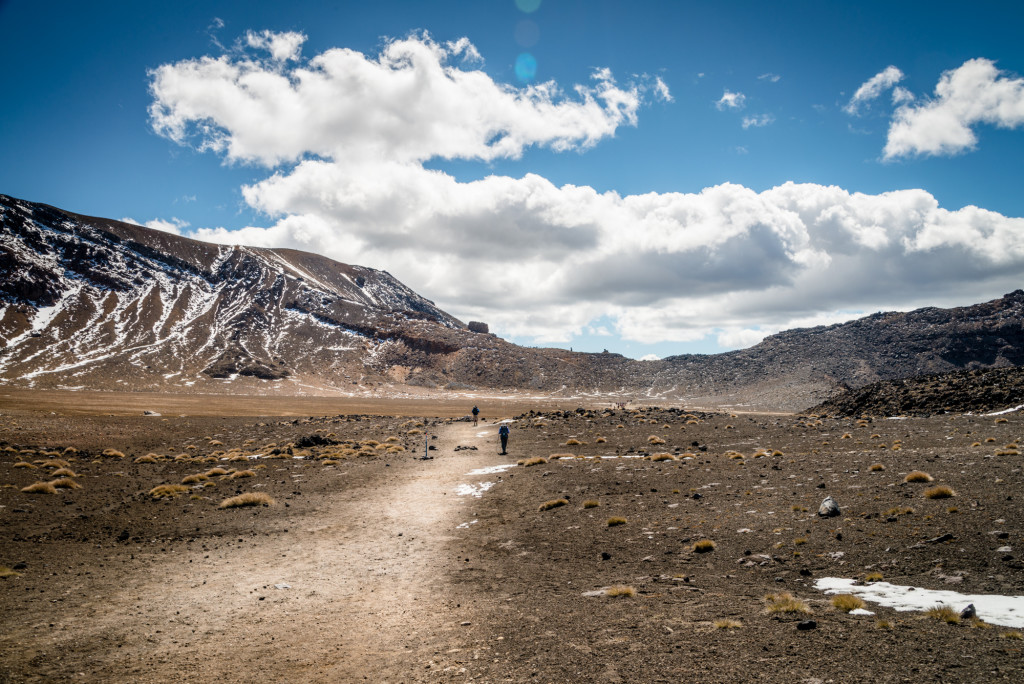
The Alpine Crossing trail continues across the South Crater, which is actually thought to be an in-filled glacial cirque rather than an actual volcanic vent where it climbs again, more steeply, to gain the top of the red crater.
[jwplayer mediaid=”1665″]
Anne and I took the side trip to the summit of Mt. Tongariro. This was a relatively short detour with limited elevation gain but it provided extraordinary views over the South Crater and across to Mt. Ngauruhoe. The summit rewards hikers with outstanding views in all directions. I think it’s a detour that should not be missed.
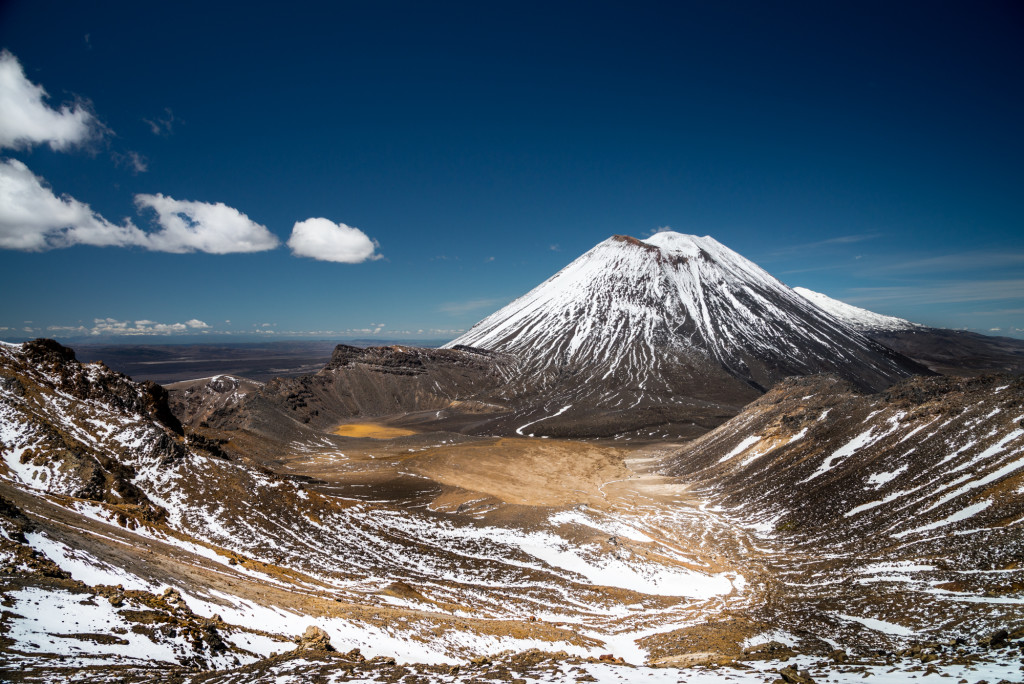
Back on the main trail, the path climbs slightly to a viewpoint over the Red Crater before descending steeply down a very loose volcanic scree slope to the Emerald Lakes.
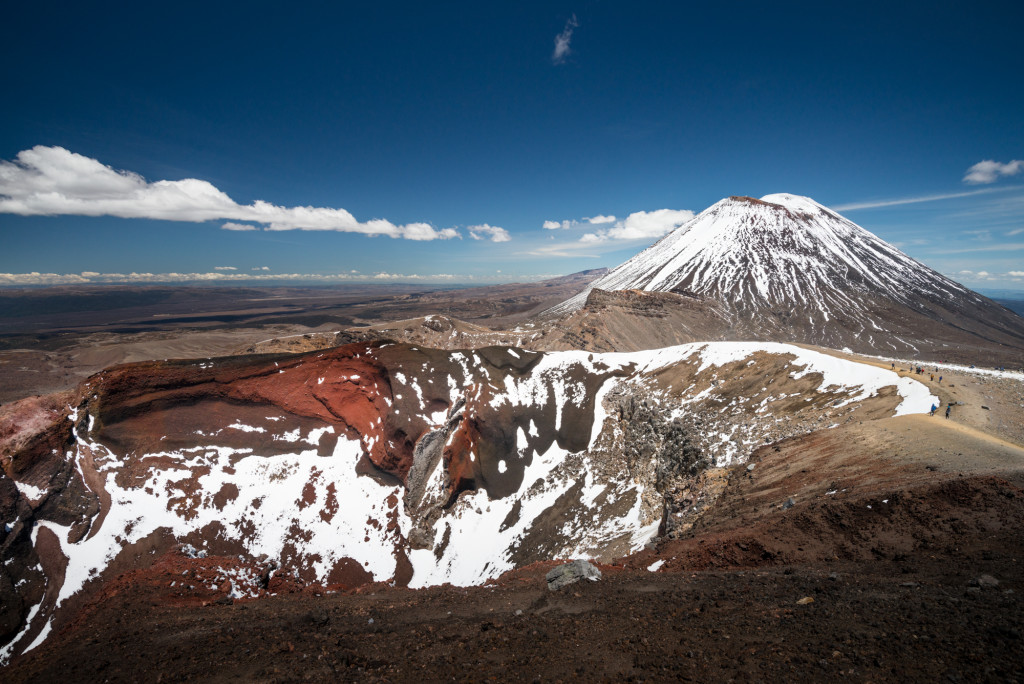
Hikers should take note that at this point the hike is about halfway done, though virtually all of the uphill has been completed.
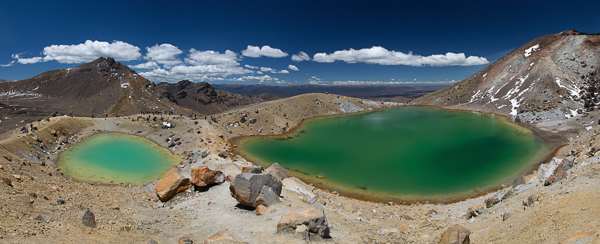
A hike across the Central Crater followed by a short climb brings hikers to Blue Lake, which is actually another crater that’s about 9700 years old. This serves as a wonderful vantage point back across the Central Crater and Mt. Ngauruhoe, which is now partially occluded by the Red Crater and the shoulder of Mt. Tongariro.
The rest of the hike from this point is relentlessly downhill to the Ketetahi Car Park. The trail passes through the active volcanic zone of Te Māri crater where an explosion in 2012 left a hole in the Ketetahi Day Shelter that is still on display.
From the shelter to the car park the trail winds first through alpine scrub before descending into the trees of the forest. This section of the hike is much longer than it appears on paper and should not be underestimated. We were only just able to make our shuttle pick up time 8.5 hours after drop off because we didn’t appropriately estimate how long this last section of the trail was. It should also be noted that even though signs posted times that showed us as on track, these didn’t seem to accurately reflect the time/distance towards the end of the trail. All that to say, if you do the crossing, factor in a little buffer.

In all, the Tongariro Alpine Crossing was a fantastic day hike. It’s certainly worthy of a top mention for all the day hikes we’ve done in the world, though whether or not it occupies the top slot needs some consideration.
Max elevation: 6457 ft
Min elevation: 2574 ft
26
2014Situated on the Coromandel Peninsula, Cathedral Cove offers sea stacks and a large archway that connects two beaches. Images taken here at the right time (the beach faces east) looked incredible online. Unfortunately, our schedule didn’t really allow for photography at the extremes of the day so we did our photography in the late afternoon.

(Photo by Anne Archambault)
The cove is about a 45 minute hike from the car park, with various detours for other beaches along the way. The track provides glimpses of the spectacular coastline and the blue water below it. Walkers can do this hike in flip flops.
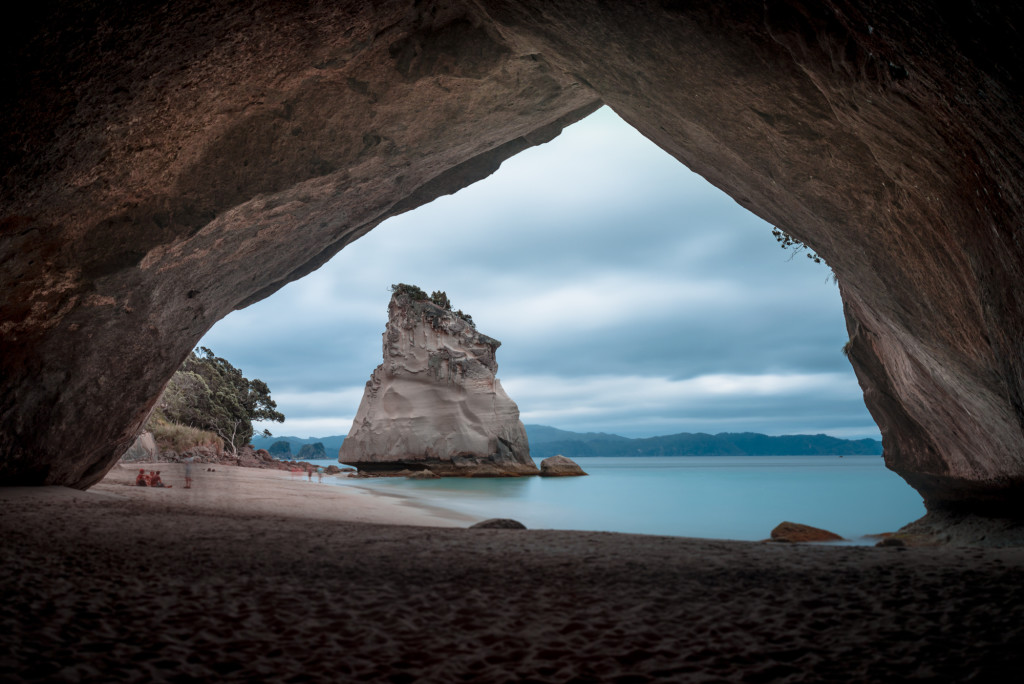
Cathedral Cove is broken into two separate beaches separated by an archway. This hole in the rock is about 150 feet across, so it’s not a trivial sea cave. On either side of the arch are beaches with their own interesting sea stacks. At the south end of the cove is a small fresh water waterfall and public toilets.
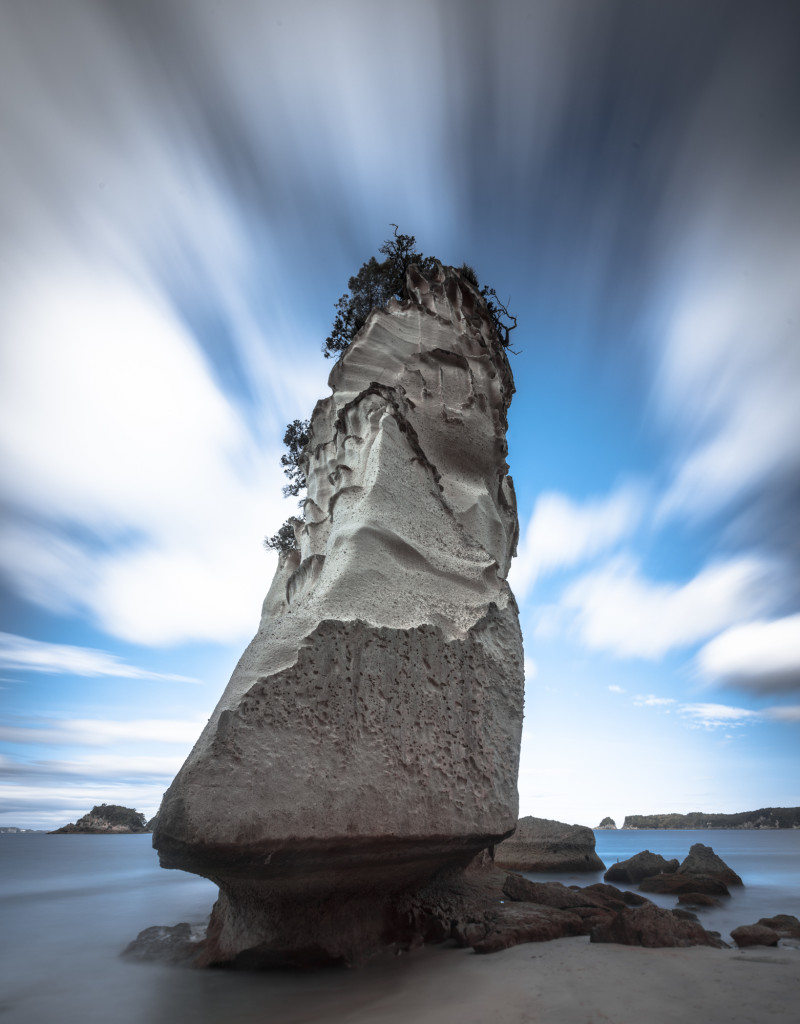
Despite being later in the day, we saw lots of photographers, beach goers, and a couple kayak tours while we were at the beach. It was a lovely place to see and one that I wish I’d been able to dedicate more time to.
25
2014Anne and I took our first full day in New Zealand to drive to Muriwai and visit the gannet colony there. There were some pretty spectacular photos in various blog posts that we both saw, and since it was close to Auckland where we had a couple days to get adjusted, it felt like a perfect day trip.
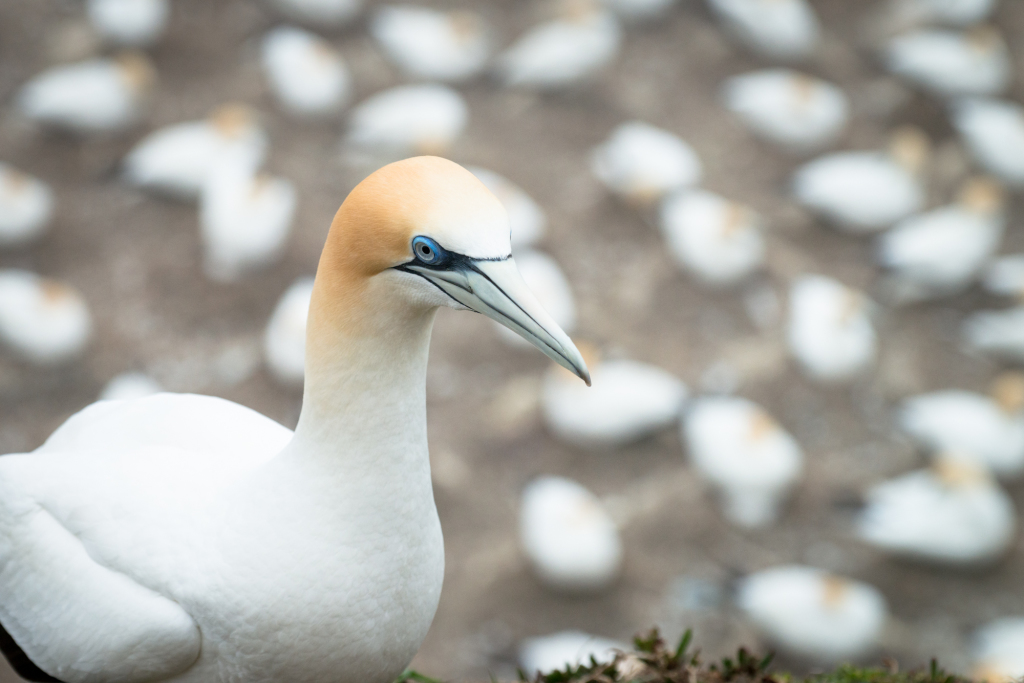
I’d seen gannets before in Iceland, but I’d not visited a proper seabird colony since Anne and I cruised the Galapagos. Colonies such as this are vivid because of all the sights, sounds, and smells (a caution here, the smell isn’t pleasant if you happen to be downwind).
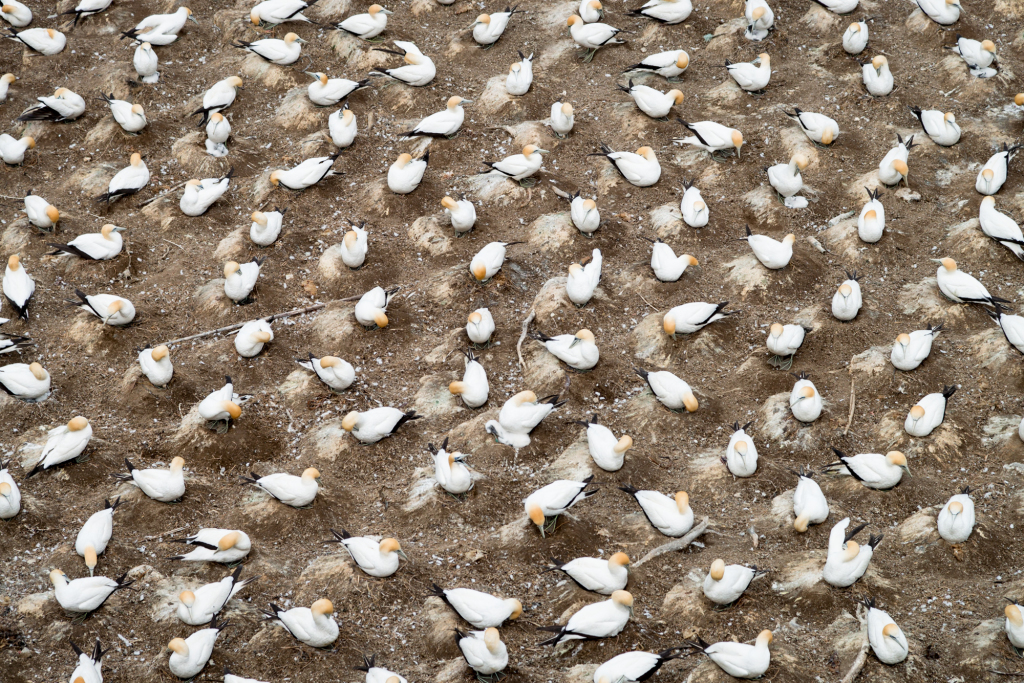
This colony is situated above Muriwai beach on a very photogenic bluff and sea stack. The birds naturally form evenly spaced nests to ensure they are out of nipping distance from their neighbors, which creates nice symmetry.
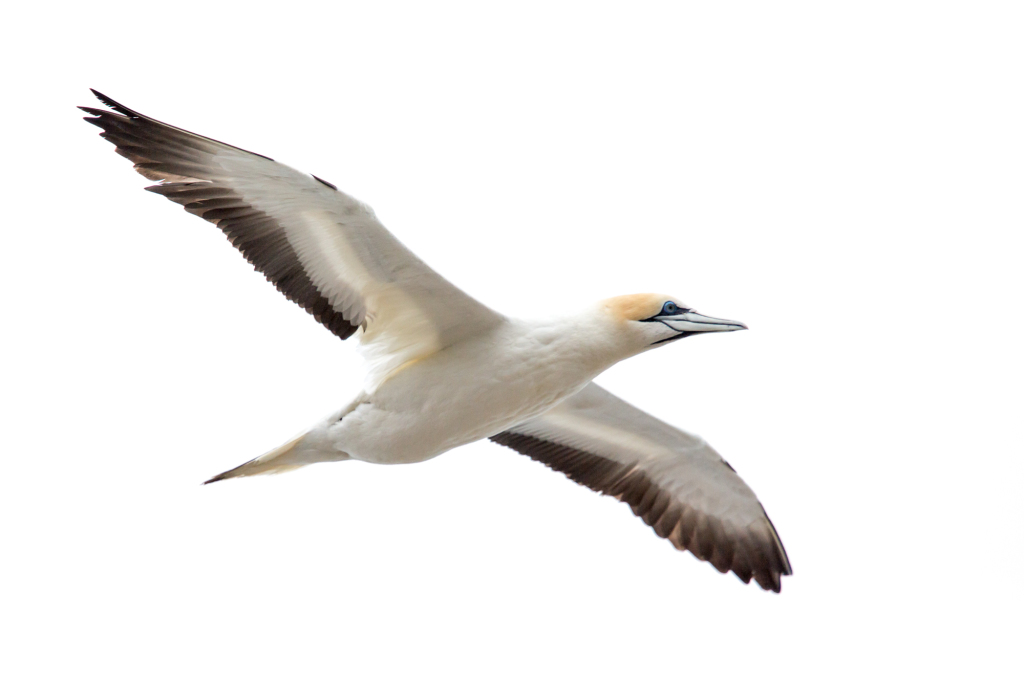
(photo by Anne Archambault)
The birds are constantly coming and going, and in this case flying past the view point sometimes as close to 5 or 6 feet. These birds aren’t particularly shy, probably due to the sheer number of visitors on a daily basis. Conditions on the day we visited were overcast and rainy and we still saw close to 40 people.
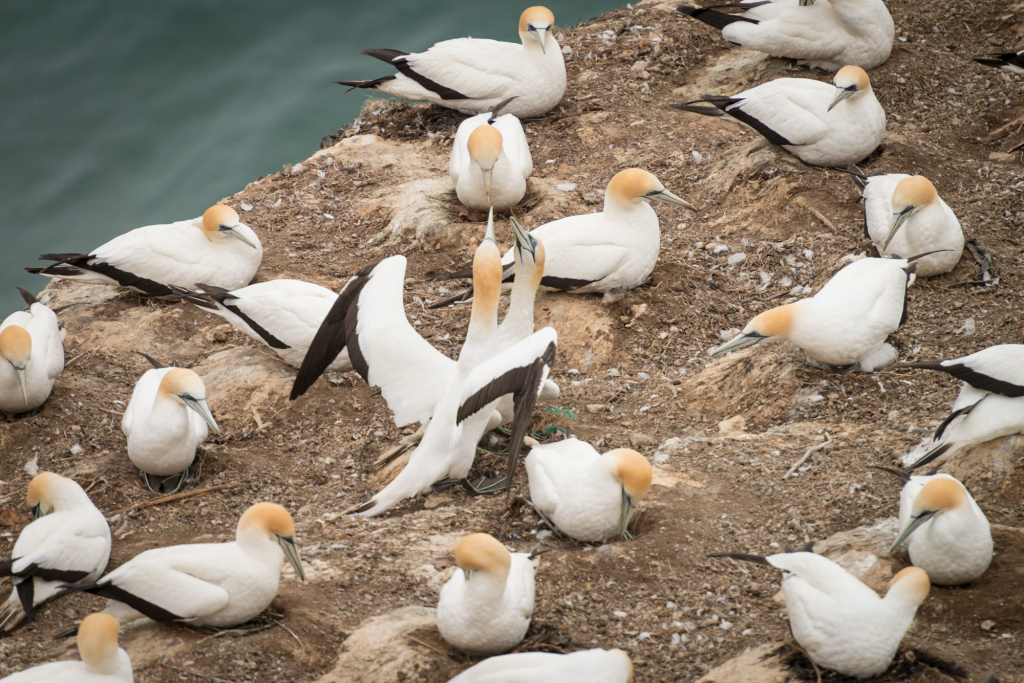
Gannets mate for life and come back to the same spot year after year to raise their young. When the young gannets get large enough to fly, they head to Australia where they tool around for a couple years before returning to the colony to find a mate, secure a nesting spot, and rear their own young. Parents take turns with the chicks, and when a mate returns the pair does what can only be described as a small reunion ceremony of head bobbing, beak tapping, and nodding.
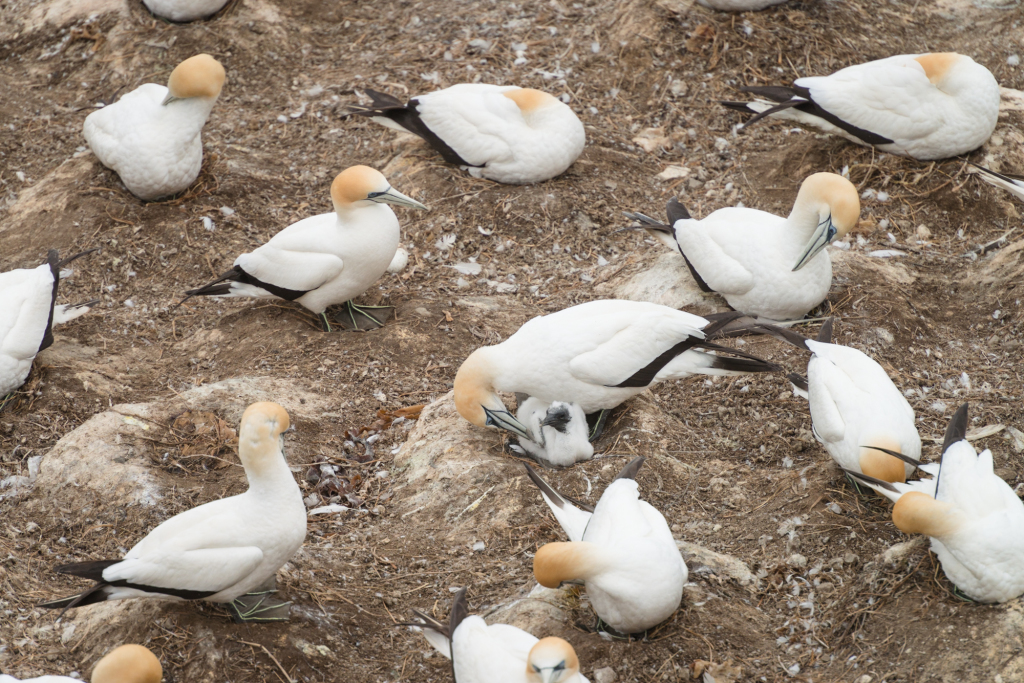
Most nesting pairs we saw had eggs, and a small number already had chicks. Others were gathering supplies for their soon to be nests.

Like albatross, gannets aren’t very well coordinated on land. On more than several occasions, birds taking off flopped through other nesting birds, receiving pecks along the way until they could throw themselves off the side of the cliff and take flight. Landing was slightly more graceful with birds landing almost directly atop their nests. Gannets at the edge of the cliff must have held prized nesting spots because these were easy to both land and take off from.
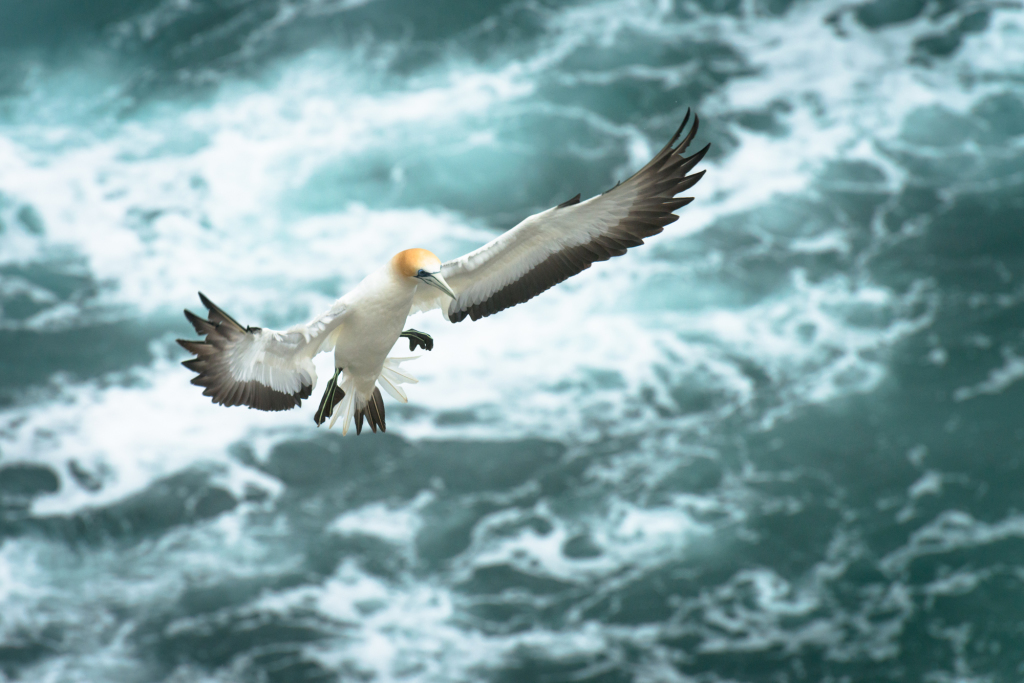
It’s hard not to be captivated by these birds. Their yellow head with blue eyes make for a striking image. One particular gannet landed quite close to the viewing platform and proceeded to preen itself for 15-20 minutes, frequently looking at us with those dramatic blue eyes.
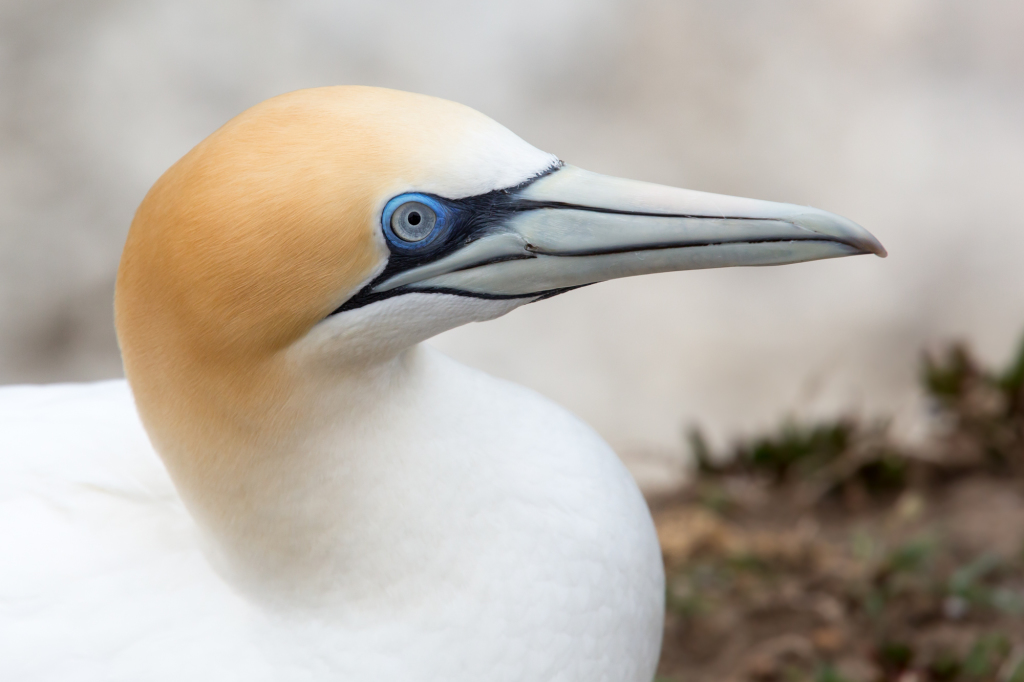
(photo by Anne Archambault)
